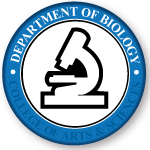Document Type
Article
Publication Date
2008
Publication Title
Systematic Biology
Volume
57
Issue
4
First Page
519
Last Page
539
Abstract
Data partitioning, the combined phylogenetic analysis of homogeneous blocks of data, is a common strategy used to accommodate heterogeneities in complex multilocus data sets. Variation in evolutionary rates and substitution patterns among sites are typically addressed by partitioning data by gene, codon position, or both. Excessive partitioning of the data, however, could lead to overparameterization; therefore, it seems critical to define the minimum numbers of partitions necessary to improve the overall fit of the model. We propose a new method, based on cluster analysis, to find an optimal partitioning strategy for multilocus protein-coding data sets. A heuristic exploration of alternative partitioning schemes, based on Bayesian and maximum likelihood (ML) criteria, is shown here to produce an optimal number of partitions. We tested this method using sequence data of 10 nuclear genes collected from 52 ray-finned fish (Actinopterygii) and four tetrapods. The concatenated sequences included 7995 nucleotide sites maximally split into 30 partitions defined a priori based on gene and codon position. Our results show that a model based on only 10 partitions defined by cluster analysis performed better than partitioning by both gene and codon position. Alternative data partitioning schemes also are shown to affect the topologies resulting from phylogenetic analysis, especially when Bayesian methods are used, suggesting that overpartitioning may be of major concern. The phylogenetic relationships among the major clades of ray-finned fish were assessed using the best data-partitioning schemes under ML and Bayesian methods. Some significant results include the monophyly of “Holostei” (Amia and Lepisosteus), the sister-group relationships between (1) esociforms and salmoniforms and (2) osmeriforms and stomiiforms, the polyphyly of Perciformes, and a close relationship of cichlids and atherinomorphs.
Recommended Citation
Li, Chenhong; Lu, Guoqing; and Orti, Guillermo, "Optimal Data Partitioning and a Test Case for Ray-Finned Fishes (Actinopterygii) Based on Ten Nuclear Loci" (2008). Biology Faculty Publications. 14.
https://digitalcommons.unomaha.edu/biofacpub/14


Comments
Published in Systematic Biology 57(4):519–539, 2008; doi: 10.1080/10635150802206883 Copyright 2008 Society of Systematic Biologists. Used by permission.